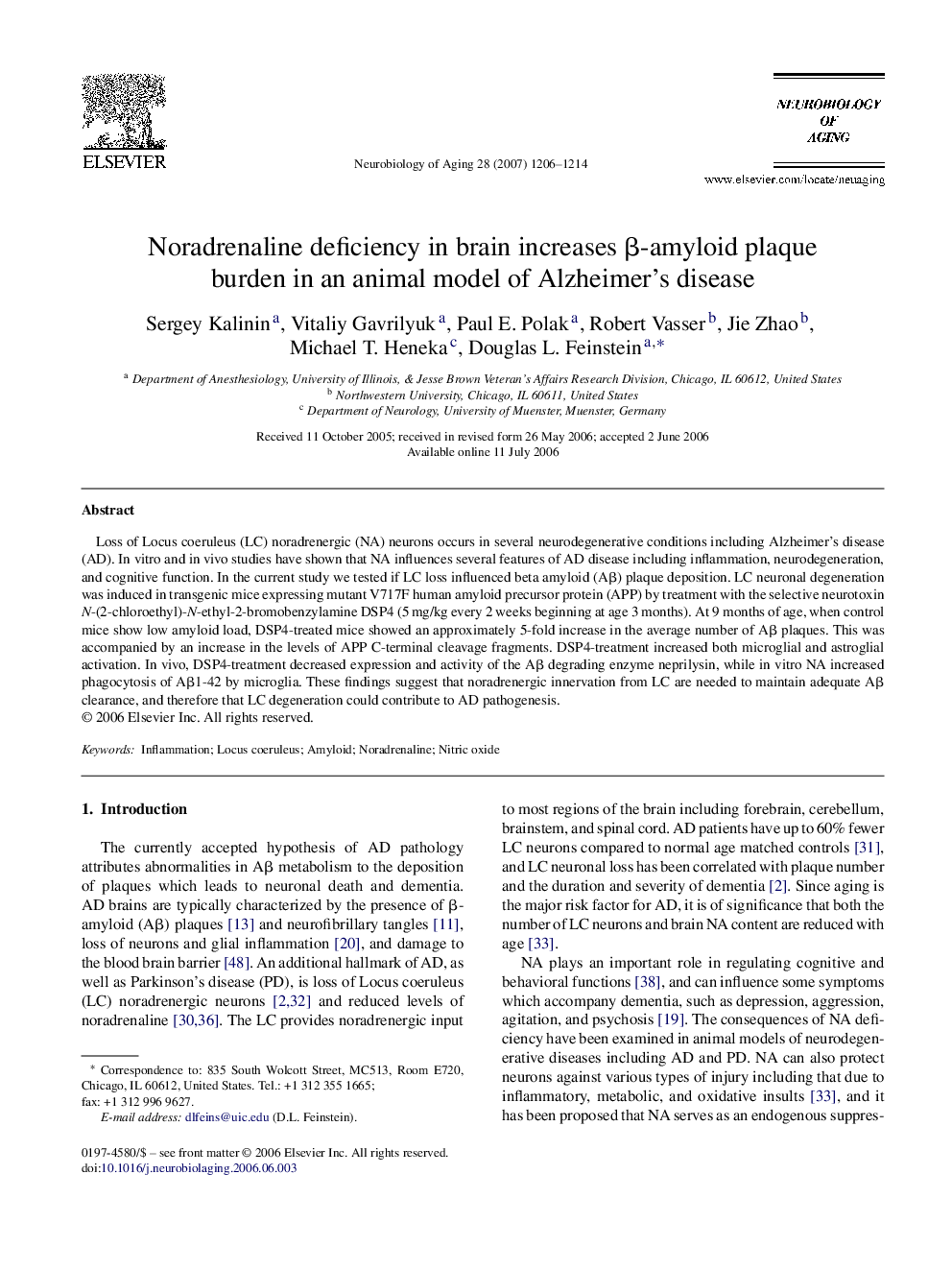| Article ID | Journal | Published Year | Pages | File Type |
|---|---|---|---|---|
| 331222 | Neurobiology of Aging | 2007 | 9 Pages |
Loss of Locus coeruleus (LC) noradrenergic (NA) neurons occurs in several neurodegenerative conditions including Alzheimer's disease (AD). In vitro and in vivo studies have shown that NA influences several features of AD disease including inflammation, neurodegeneration, and cognitive function. In the current study we tested if LC loss influenced beta amyloid (Aβ) plaque deposition. LC neuronal degeneration was induced in transgenic mice expressing mutant V717F human amyloid precursor protein (APP) by treatment with the selective neurotoxin N-(2-chloroethyl)-N-ethyl-2-bromobenzylamine DSP4 (5 mg/kg every 2 weeks beginning at age 3 months). At 9 months of age, when control mice show low amyloid load, DSP4-treated mice showed an approximately 5-fold increase in the average number of Aβ plaques. This was accompanied by an increase in the levels of APP C-terminal cleavage fragments. DSP4-treatment increased both microglial and astroglial activation. In vivo, DSP4-treatment decreased expression and activity of the Aβ degrading enzyme neprilysin, while in vitro NA increased phagocytosis of Aβ1-42 by microglia. These findings suggest that noradrenergic innervation from LC are needed to maintain adequate Aβ clearance, and therefore that LC degeneration could contribute to AD pathogenesis.
